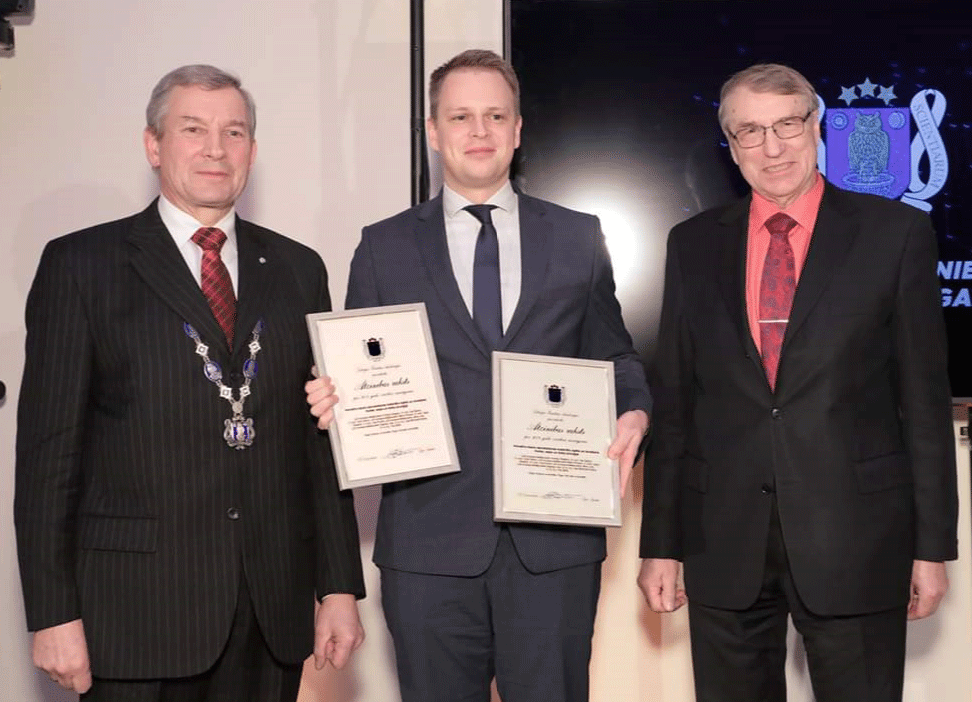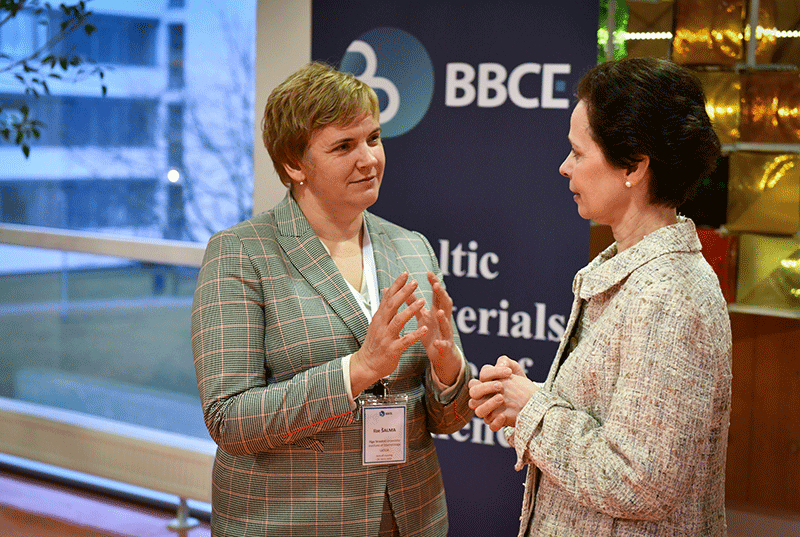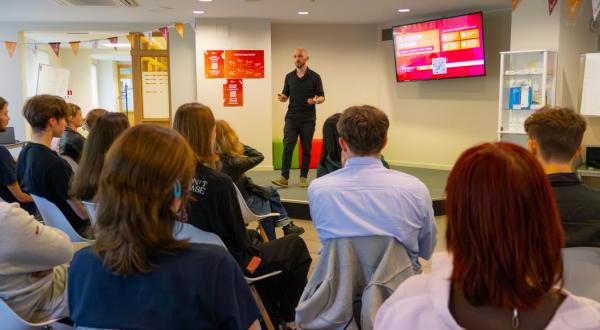Will it Be Possible to Print Bones in the Future?
An award ceremony celebrating the creators behind the most important scientific achievements in 2019 was held in the Latvian Academy of Sciences (LAS) on 6 February. Among them were six researchers from RSU who received certificates of acknowledgement for their research into and introduction of an innovative bone replacement material to be used in oral and maxillofacial surgery.

The award ceremony on 6 February 2020 in the Latvian Academy of Sciences (LAS). From the left: LAS president Prof. Ojārs Spārītis, RSU Assistant Prof. Ingus Skadiņš and Full Member of LAS Prof. Ivars Kalviņš.
The authors of the research are RSU Professors Andrejs Skaģers, Māra Pilmane and Juta Kroiča, Associate Professor Ģirts Šalms, Assistant Professors Ingus Skadiņš and Ilze Šalma, as well as Riga Technical University (RTU) professors Jānis Ločs and Līga Bērziņa-Cimdiņa, Assoc. Prof. Dagnija Loča, as well as Vita Zālīte. In the following interview, one of the authors of the research, Asst Prof. Ilze Šalma from the RSU Department of Oral and Maxillofacial Surgery, talks about current achievements in the use of biomaterials in dentistry and her plans for the future.
‘This research project is not a linear process with specific start and end points, because it still continues at a newer and probably higher level,’ says the assistant professor. This is confirmed by the fact that the RSU Institute of Stomatology will be one of the participants of the extensive Baltic Biomaterials Centre of Excellence project where researchers from RTU, the Latvian Institute of Organic Synthesis, RSU, the Swiss AO Research Institute Davos and German Friedrich-Alexander University Erlangen-Nürnberg will work together. The project is implemented with the support of the Latvian government as well as EU funding.
Why is the RSU Institute of Stomatology participating in the Baltic Biomaterials Centre of Excellence?
The purpose of the institute is to research and develop 3D-planning for use in maxillofacial surgery followed by printing the necessary parts on a special 3D-printer in materials used in surgery.

From the left: Ilze Šalma, Asst Prof. of the Department of Oral and Maxillofacial Surgery of the RSU Faculty of Dentistry.
If a patient has a bone defect after an injury, or for other reasons it is not easy to create an implantable ceramic part that fits perfectly using the technology currently available. After analysing a patient’s computed tomography images we can use special software to model the shape of the implant. The software then instructs the printer and the part is printed using the necessary implantable material.
What “ink” will be used, i.e. the material used for printing, is one of the most important questions when it comes to 3D-printing. Special polymer materials can be used. The biggest challenge is to master 3D-printing ceramic materials as the ceramic grains are initially a kind of liquid mass, after which the printed parts need to be placed in a furnace, similarly to how a potter bakes a vase, and as a result the part hardens. The materials from which the implants will be made will be prepared by cooperation partners of RSU.
How developed and wide-spread is the use of artificial materials in oral and maxillofacial surgery today?
If we are talking about biomaterials synthesised in Riga bone-substitutes based on calcium phosphate ceramic granules should be mentioned. They are somewhat reminiscent of rough sugar grains and are used to prevent defects in bone tissue or to increase bone volume. If a patient no longer wants removable dentures, for example, but wants dental implants instead, but the bone has shrunk over time, because the tooth was extracted long ago then the screw necessary to fix the implant cannot be screwed on because the wall is too thin making it necessary to increase the bone volume. In a case like this calcium phosphate ceramic granules would be used, because ceramic has very similar properties to bone tissue and the granules grow into the bone, and bone tissues grows in between the granules.
The population is aging, so requirements to improve quality of life are increasing. Elderly people live increasingly active lives and do not want removable dentures. Researchers in Latvia and other European countries are currently attempting to assign additional properties to the granules, for example make them anti-inflammatory.
Nowadays, calcium phosphate ceramic granules are not only used in dentistry, but also, for instance, in traumatology and orthopaedics. The ability to print bone implants on a 3D-printer using the same materials used in surgery would be an important breakthrough in the treatment of patients and for improving their quality of life.
Related news
 Develop your business skills and bring ideas to life with the B-Space incubation programmeFor RSU Employees, For High School Students, For Students, Innovation
Develop your business skills and bring ideas to life with the B-Space incubation programmeFor RSU Employees, For High School Students, For Students, Innovation


